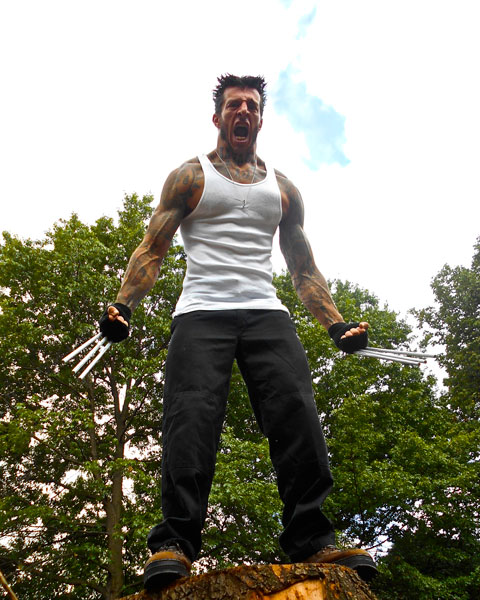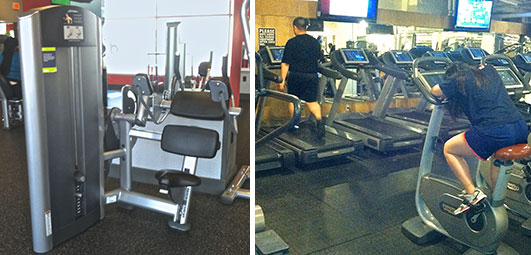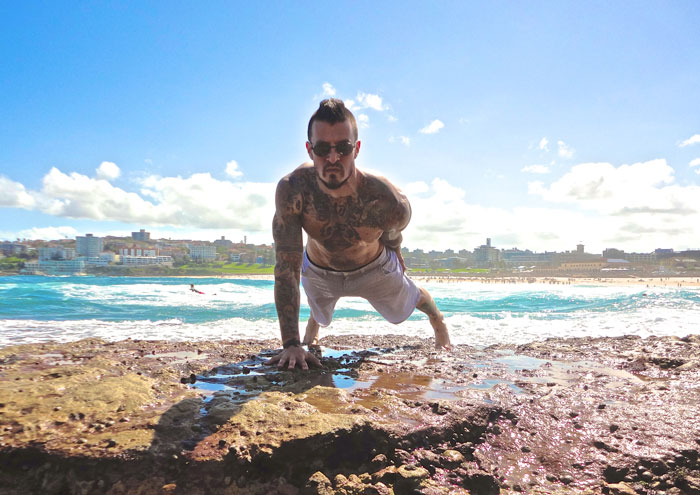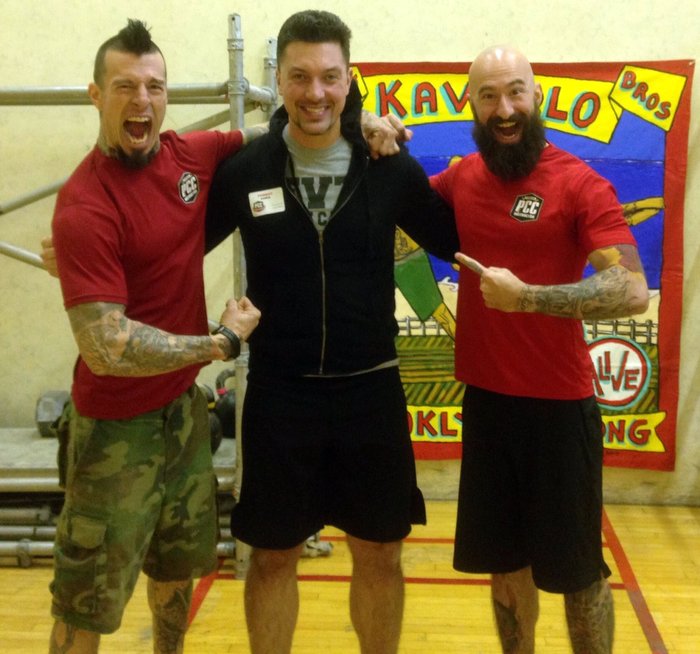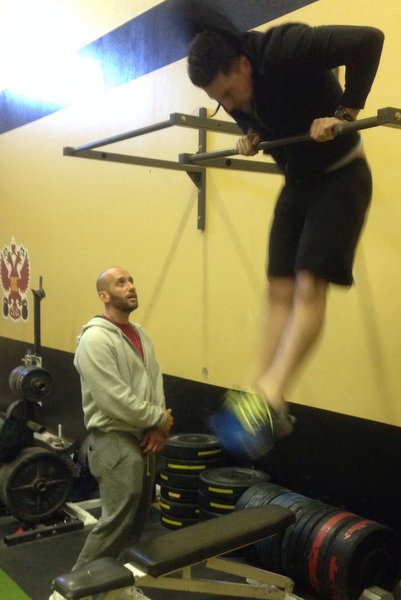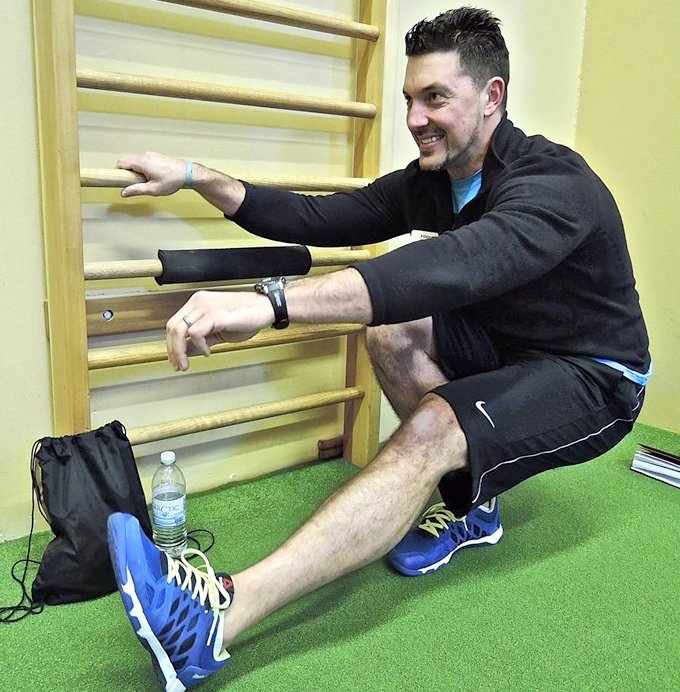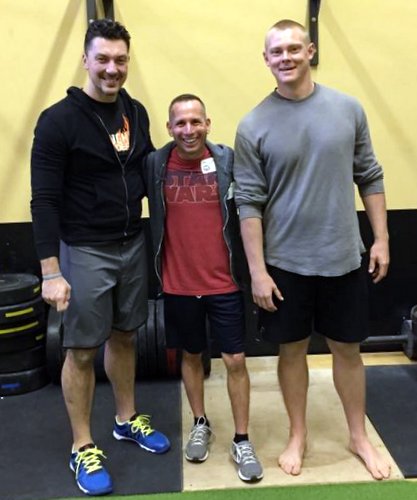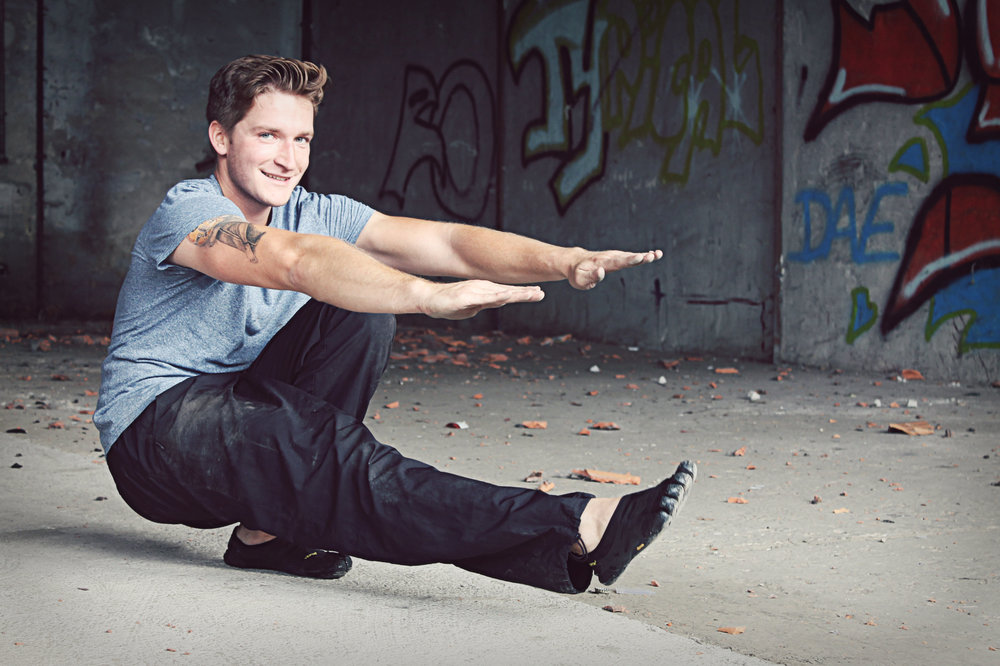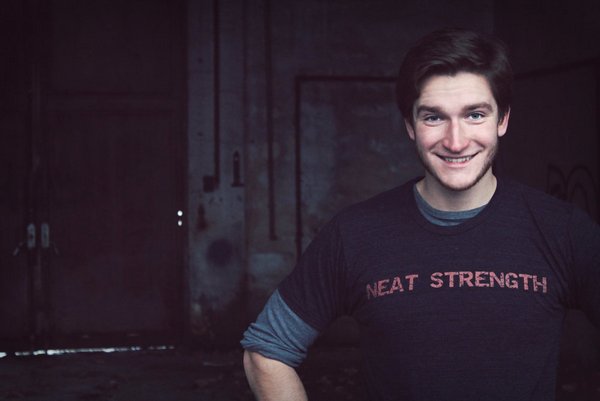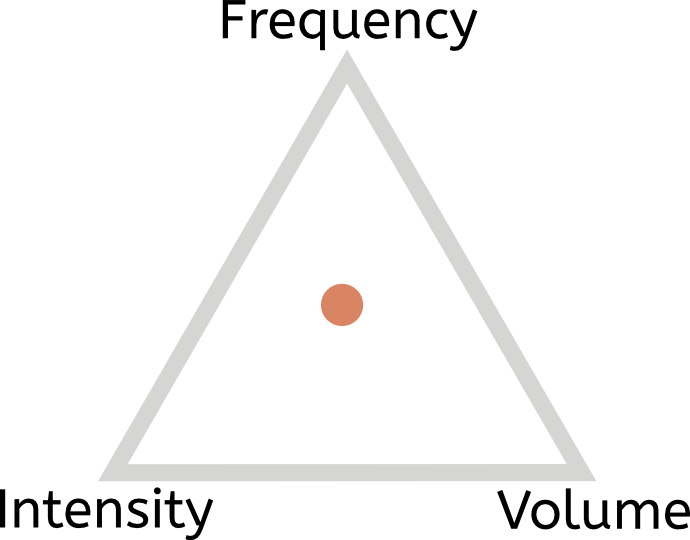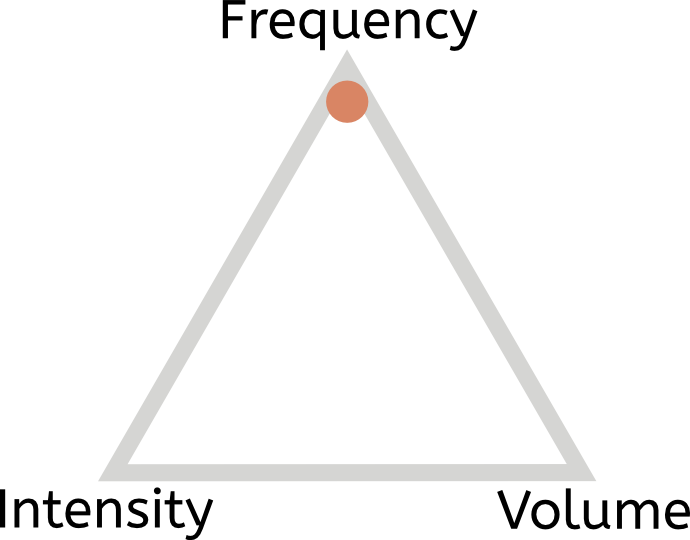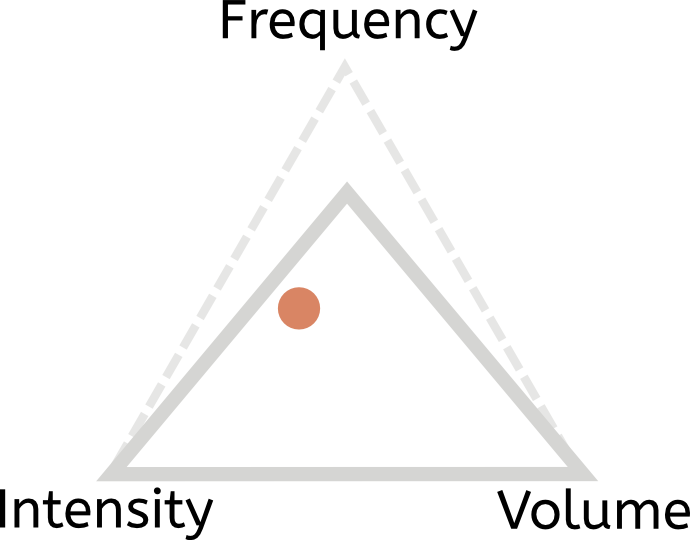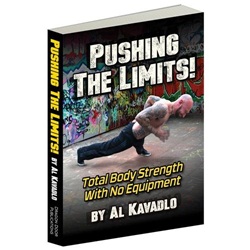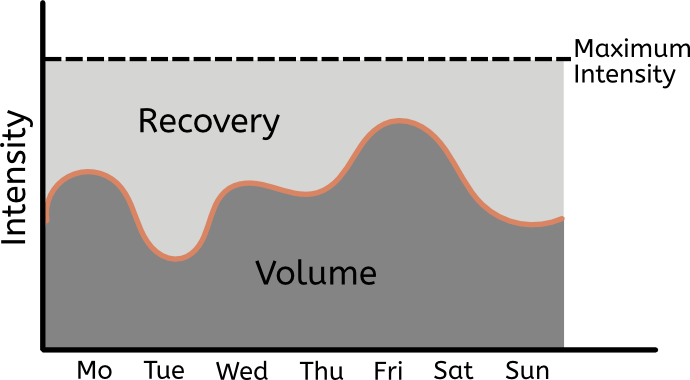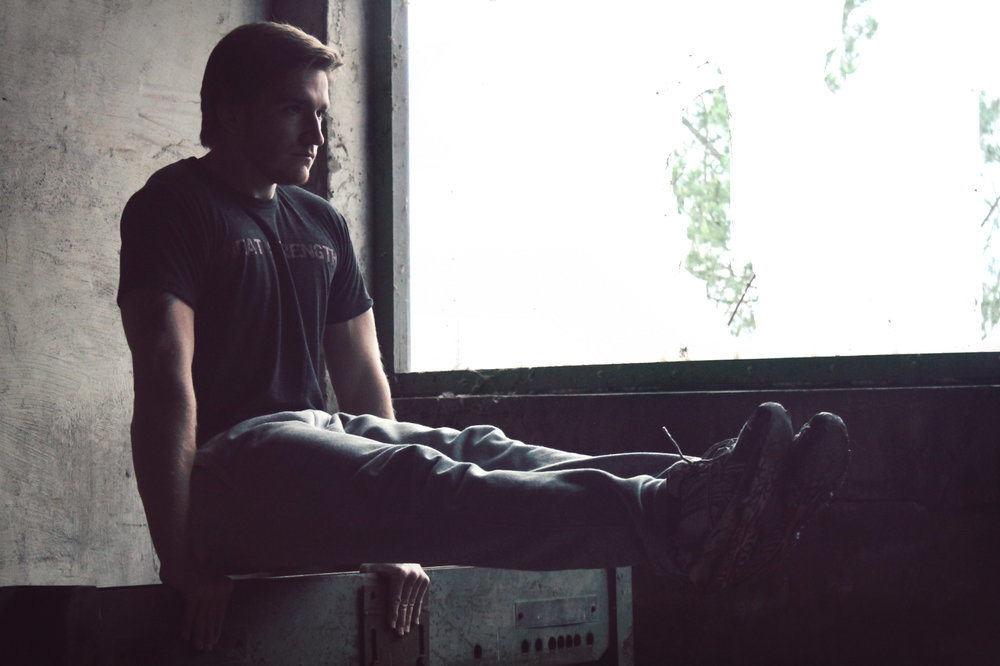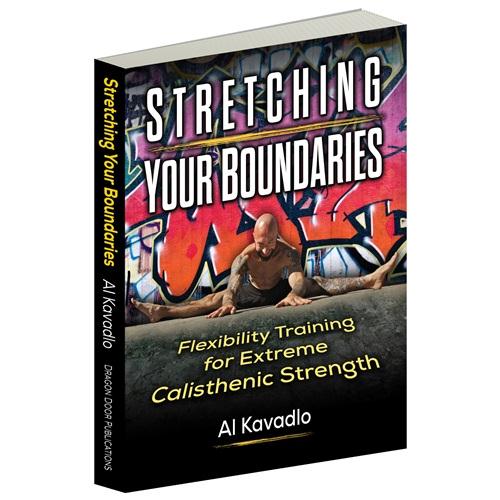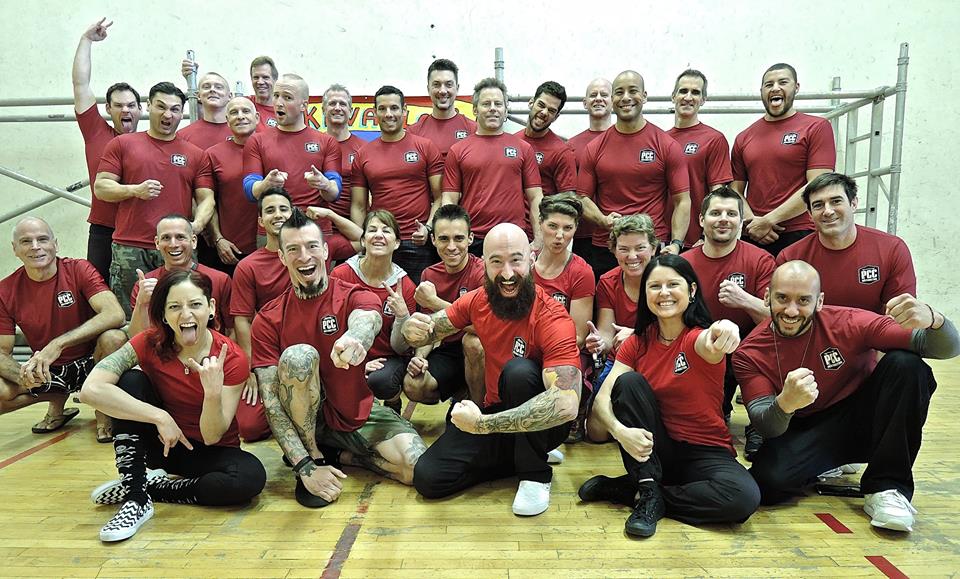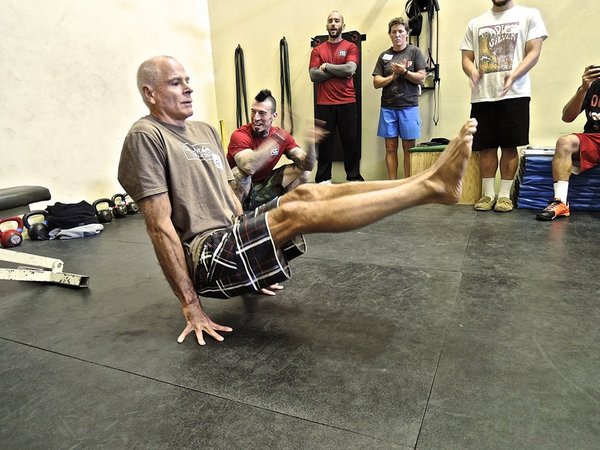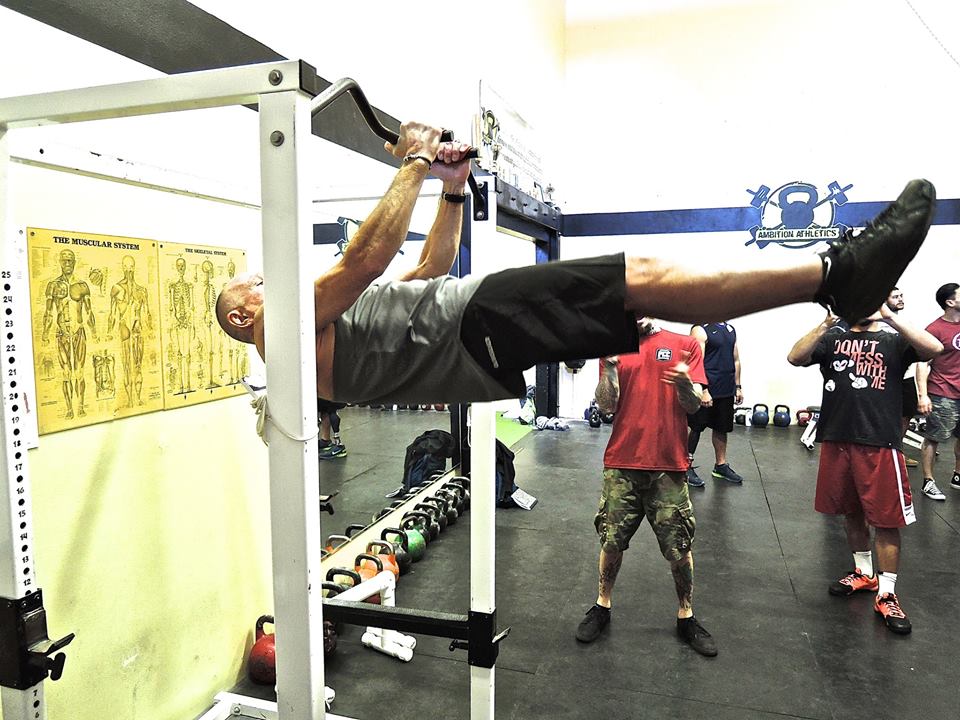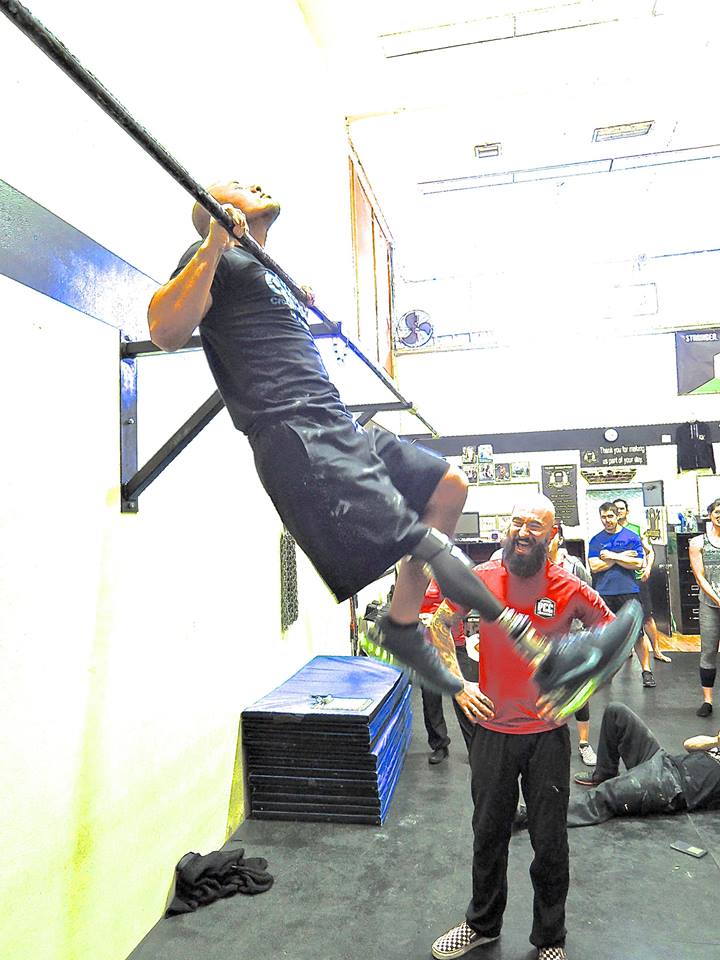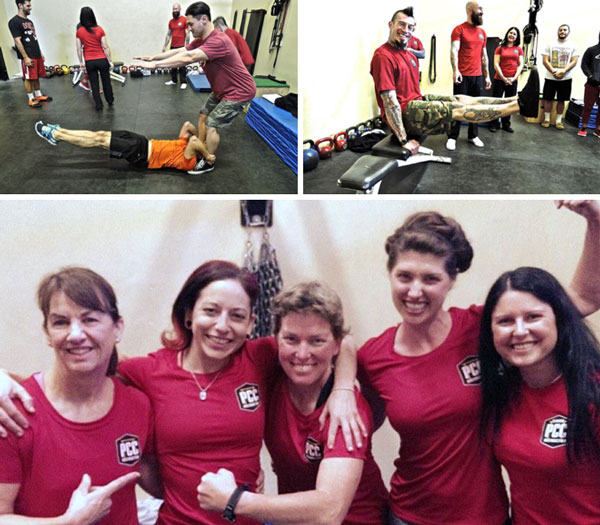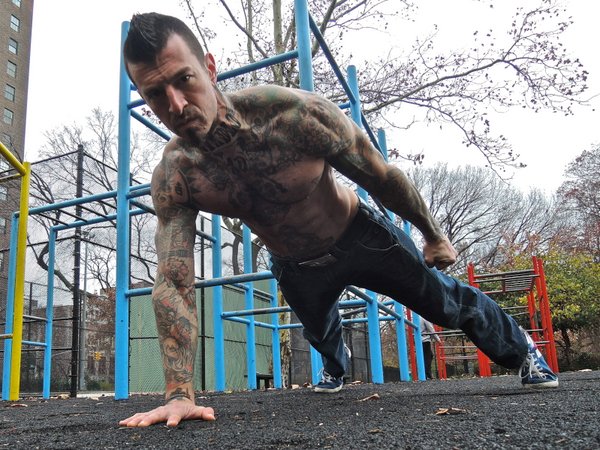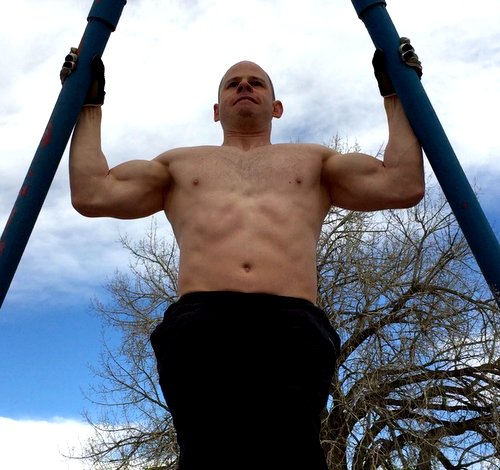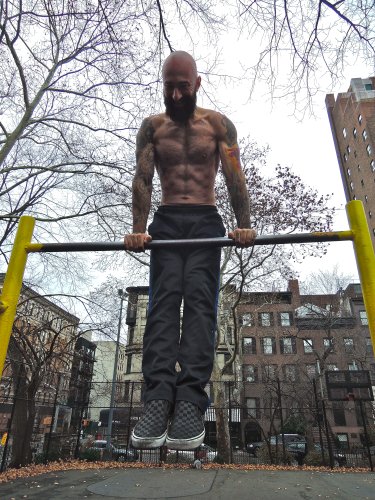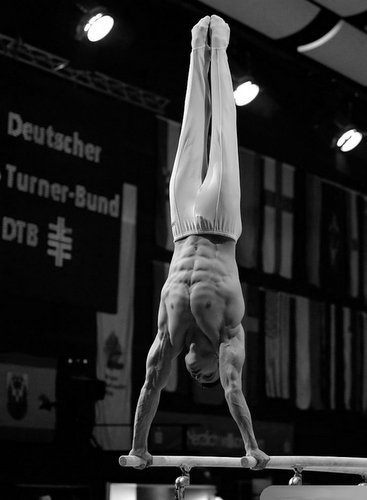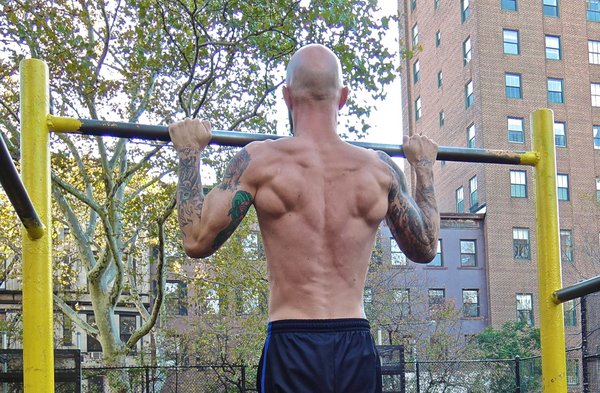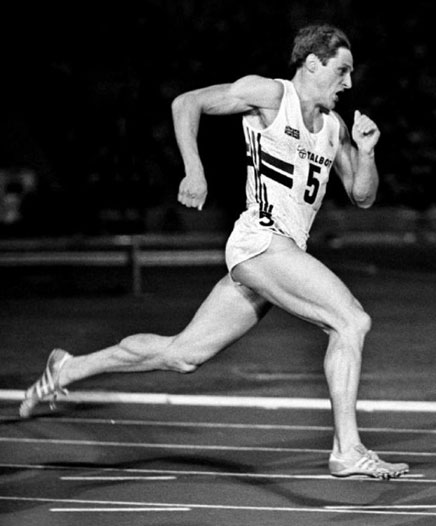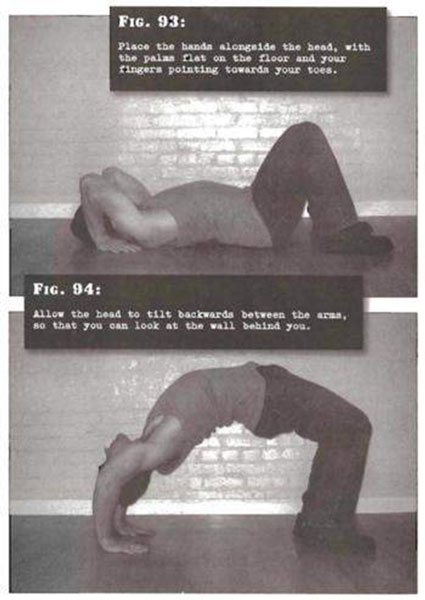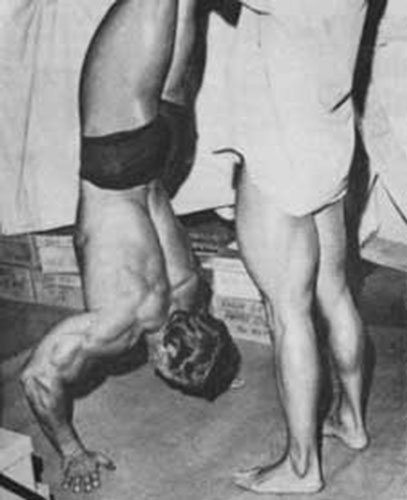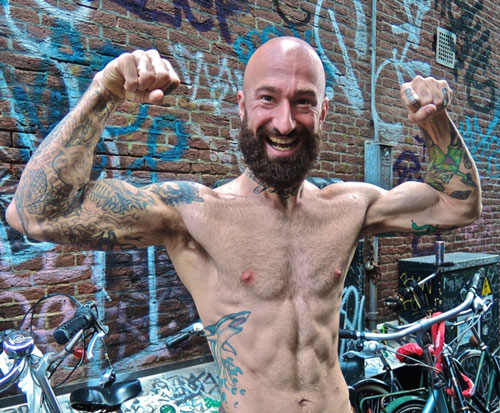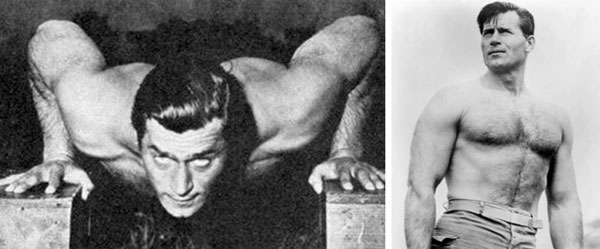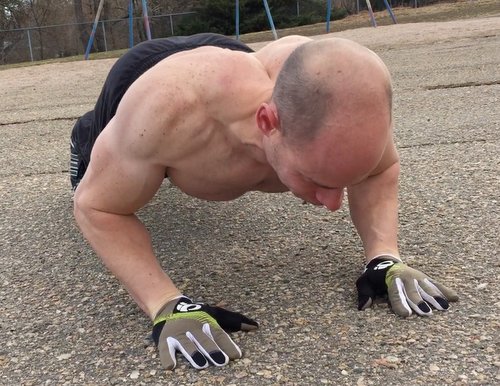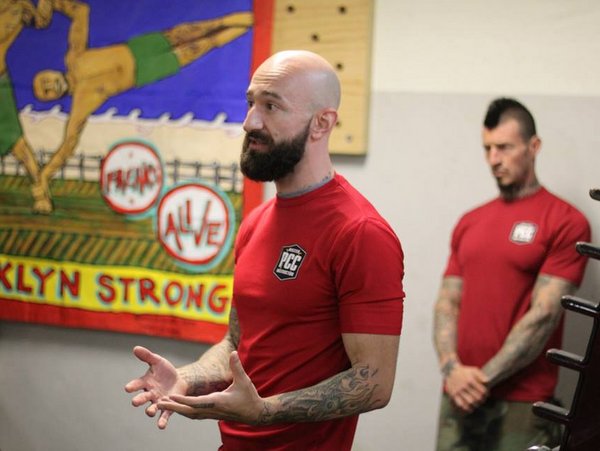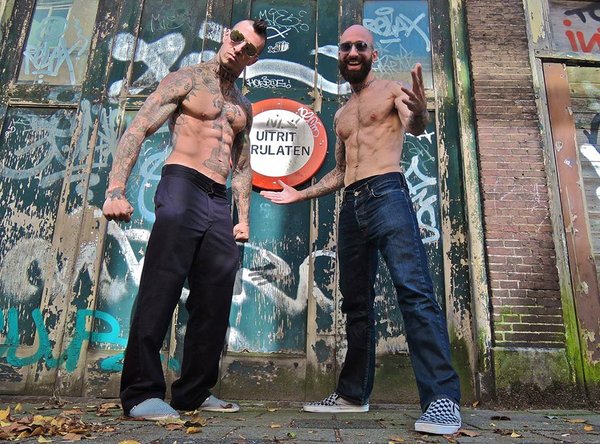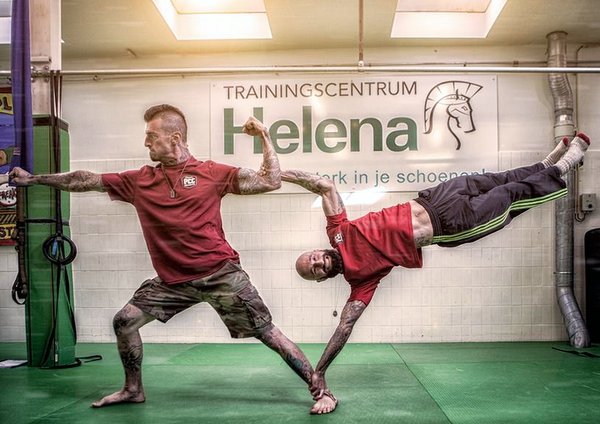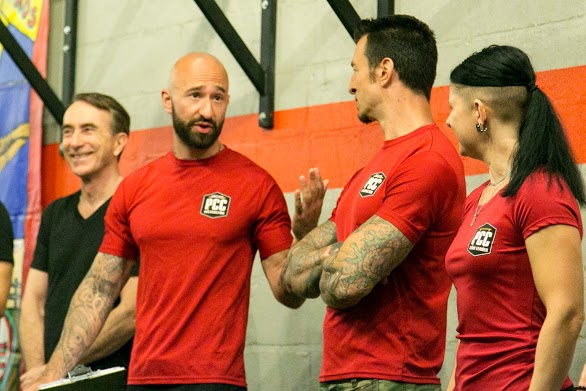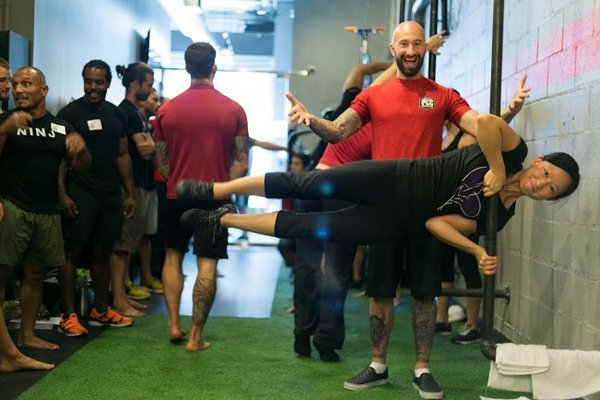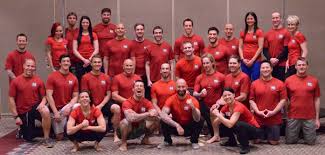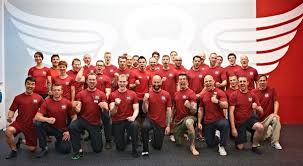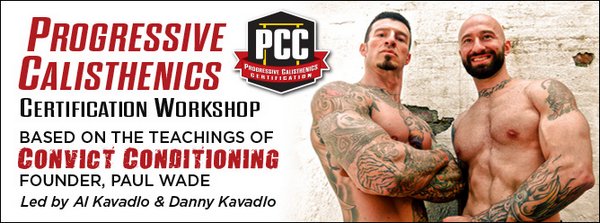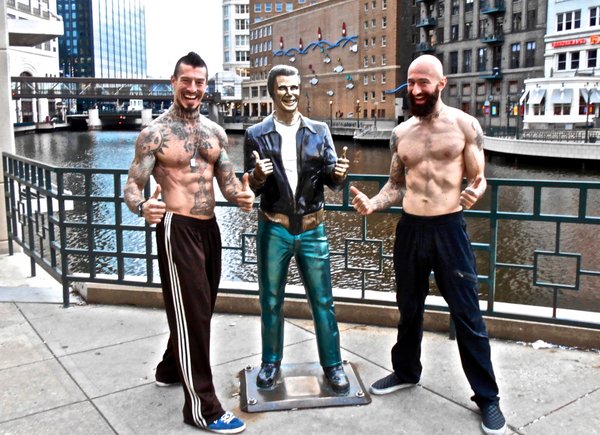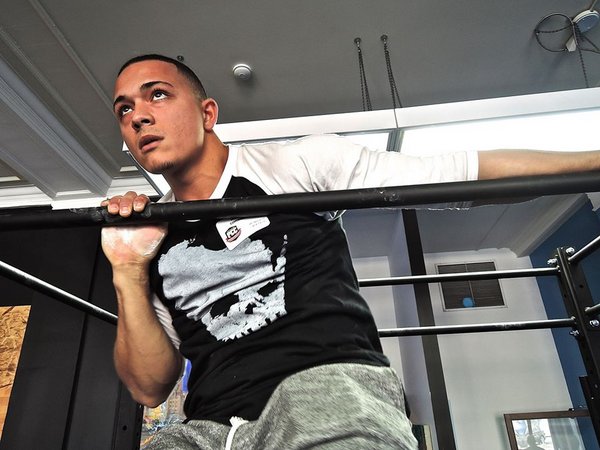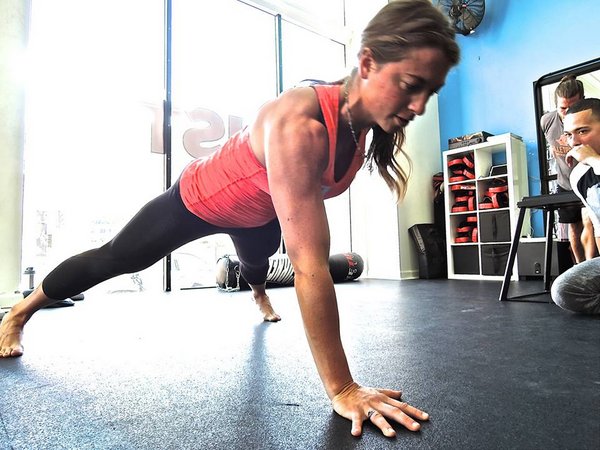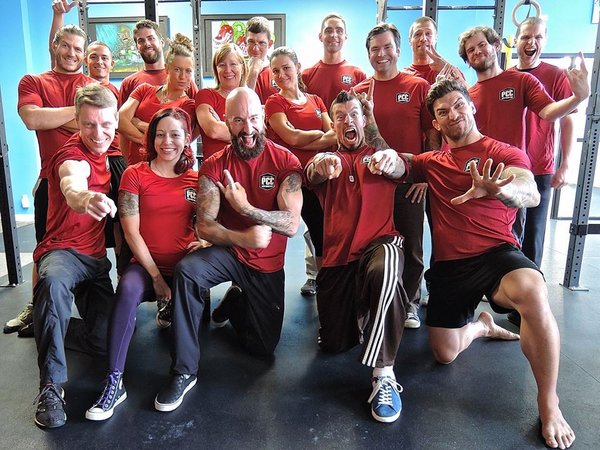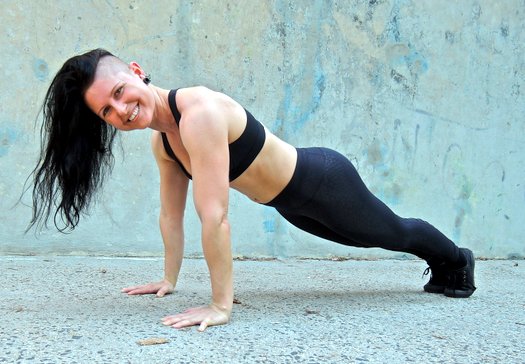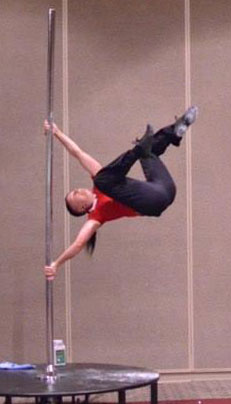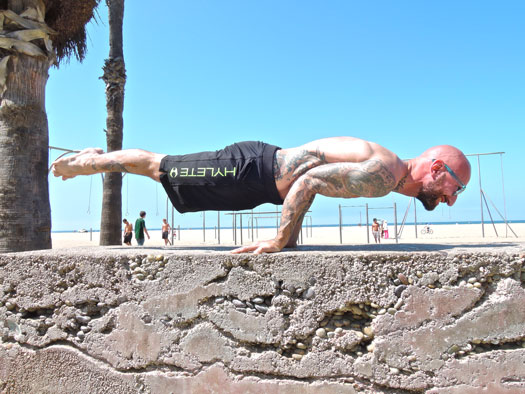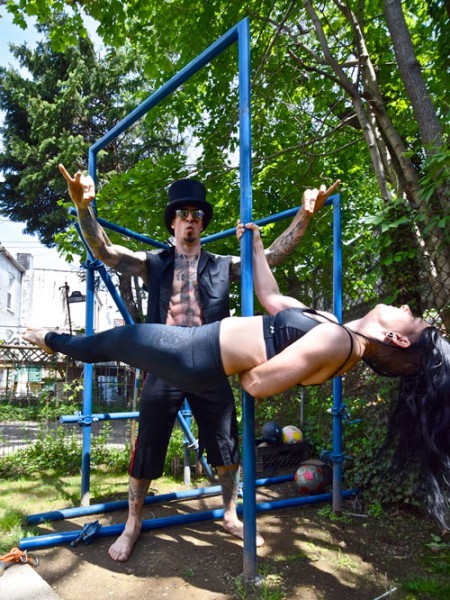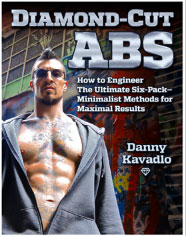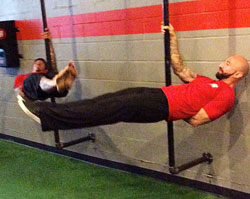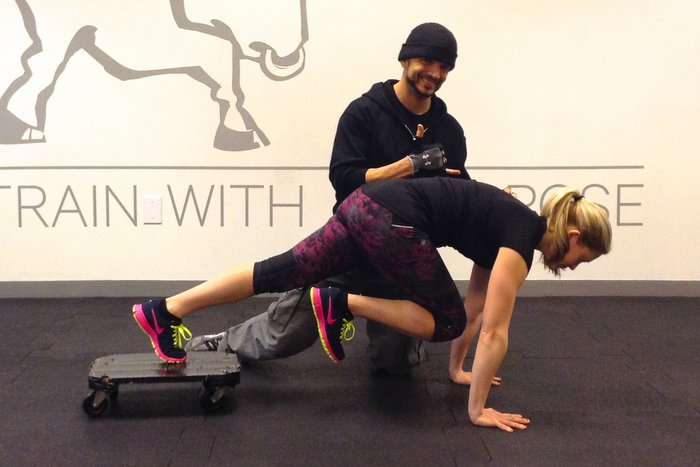
My clients count on me to be an innovative trainer. In fact, I’ve always enjoyed finding new and effective ways to work with people way before the trend of ‘being different just to be different’ became popular. So it wasn’t much of a surprise when my client Lorraine came in for her training session at my studio carrying a dolly that she grabbed from her dumpster at work. Her dad had made it but decided to get rid of it so she brought it with her and said “I have a very bad feeling that you can make good use of this”. Immediately my wheels started turning with all the fun ways I could use this thing. I took my time and experimented. I found movements that were safe and distinctly purposeful for my clients.
After a lot of thought and even more practice I came up with 24 useful ways to train with the dolly. Most of them stem from the prone position but each one remains unique with different neuromuscular firing patterns. Like all bodyweight training regimes, every exercise is a progression to more advanced movements. These movements are all accomplished with a “slow is smooth, smooth is fast approach. (Thank you Phil Dunphy.) They all not only require stability, but also an understanding of how the muscles of the body have to behave as one cohesive unit.
Here are the exercises in order from beginner to advanced.
THE PLANK WALK. I believe that the plank walk is the most important exercise of the 24 exercises I have listed. This one movement will set you up for all of the rest. It is excellent for developing control and discipline and it teaches a client how to become patient when learning and performing a new exercise. The plank walk is performed by keeping the body rigid while the forearms are resting on the dolly. The only parts of the body that are moving are the feet and ankles while you SLOWLY move towards your destination. It is imperative that this be mastered before moving on.
The next 4 videos demonstrate the plank walk:
- Plank Walk
- Injured Bear Crawl
- Wheel Barrow
- Reverse Wheel Barrow
Series 1 Hand Truck Workout
Be sure to continue to move slowly during the next progression.
THE TRAVELING PUSHUP. Now we will be adding additional movements. In the introductory phase we kept the body rigid while traveling with the dolly. Next we will be moving the body in different planes of motion while emphasizing control. Bodyweight practitioners discipline themselves to move with utmost precision in order to reap the greatest rewards. This is important to convey to the newcomers to this kind of conditioning.
The next 4 videos demonstrate the traveling pushup variations:
- Traveling Pushups
- Travel Bus Driver Pushups
- Single Leg Wheel Barrow
- Rotational Wheel Barrow
Series 2 Hand Truck Workout
THE TRAVELING V WALK. During the next series of exercises there is more emphasis on the transfer of weight onto the shoulders. This series is ideal for the client who wants to progress to walking on their hands in an inverted position. These selected exercises will definitely help them attain that goal. The traveling v walk will specifically strengthen the wrists. It also aids in teaching the client the proper forward lean that is needed while also adding flexibility to the wrists.
The next 4 videos demonstrate the traveling v walk and the variations:
- Traveling V Walk
- Traveling Inch Worm
- Tuck Walk
- Swimmers
Series 3 Hand Truck Workout
THE 360. The next series is called the 360 because there is a shift from developing strength towards developing stability. These exercises require control and concentration from the client. There is an emphasis on 100 percent body compression as well.
The next 4 videos demonstrate the 360 and its variations:
- 360
- Side Walk
- Bus Drivers
- Single Arm Walk
Series 4 Hand Truck Workout
THE LEG SEQUENCE. This series emphasizes balance and leg strength. I was trained as a track sprinter and have come to the conclusion that it is important to isolate the hamstrings and fire up those fibers first by performing some bridges before moving on to squatting and lunging techniques.
The next 4 videos demonstrate the leg sequence:
- Hip Bridges and Leg Curl
- Straight Leg Bridge
- Injured Animal Run
- Pistol Sweeps
Series 5 Hand Truck Workout
PRESSING. These last 4 exercises will require that clients move while pressing. Your clients will need adequate shoulder stability and full body awareness before moving on to this advanced series. If your client has stalled in a particular calisthenic movement, these applications may help him or her to achieve a goal that at one time seemed impossible, or your client may just feel like these are achievements on their own! Either way, whatever your level, proceed slowly and own the move!
The next 4 videos will demonstrate the press sequence
- Hop off the Press
- Rotational Hop Press
- Sweeping One Arm Press
- Press and Slide
Series 6 Hand Truck Workout
You can pick up a dolly at the local hardware store and easily incorporate it into your training. Use your imagination and come up with variations specific to your clients’ needs. I use this piece of equipment in group training, with one on one, and during my own training. My clients love to tell me how much they have come to hate the dolly but always admit in the end that they love the results they are seeing!!!!
***
George Corso, CSCS, NSCA-CPT, PCC, RKC, I360, WKC, is the co-owner and founder of CORSO. Over the last 15 years, George has been a successful varsity track and field coach, working with athletes to reach district and state championships. He actively trains in the art of Jeet Kune Do (JKD) as a level 3 student. George can be contacted at george@corsofit.com.
